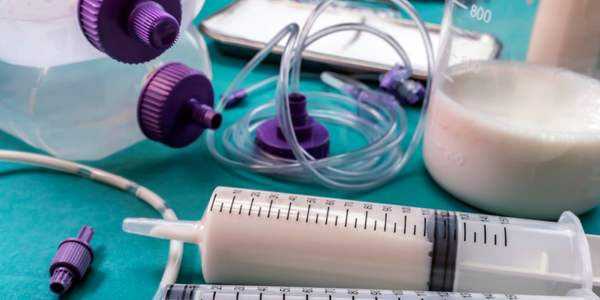Total parenteral nutrition (TPN) is a type of intravenous (IV) nutrition that is used to provide nutrients to people who are unable to get enough nutrition from the diet. It is typically used in people with Short Bowel Syndrome who are unable to absorb enough nutrients from the intestine due to the loss of a portion of the intestine or other issues.
TPN involves the use of an IV to deliver a solution containing nutrients directly into the bloodstream. The solution may contain a mix of proteins, carbohydrates, fats, electrolytes, and other nutrients that are necessary for the body to function properly.
TPN is typically administered through a central venous catheter, which is a tube that is inserted into a vein in the neck, chest, or arm. The catheter is then connected to a small pump that delivers the nutrient solution to the body.
TPN can be a helpful option for people with Short Bowel Syndrome who are unable to get enough nutrition from the diet. It is typically used as a temporary measure until the intestine is able to adapt and absorb more nutrients from the diet.
It is important to note that TPN can have potential risks and complications, including infection, blood clots, and liver damage.

Total parenteral nutrition (TPN) solutions are custom-made for each individual patient based on their specific nutritional needs.
The process of preparing a TPN solution typically involves the following steps:
1. Assessing the Patient’s Nutritional Needs
A healthcare team, including a doctor and a dietitian, will assess the patient’s nutritional needs and determine the appropriate mix of nutrients for the TPN solution. This may involve reviewing the patient’s medical history, conducting laboratory tests, and performing a physical examination.
2. Selecting the Nutrients
The healthcare team will select the specific nutrients that will be included in the TPN solution based on the patient’s nutritional needs. This may include proteins, carbohydrates, fats, electrolytes, and other nutrients.
3. Mixing the Solution
The TPN solution is typically mixed in a sterile environment, such as a pharmacy or a hospital’s TPN unit. The solution is prepared according to the patient’s specific nutrient needs and is then stored in a sterile container until it is ready to be used.
4. Administering the Solution
The TPN solution is typically administered through a central venous catheter, which is a tube that is inserted into a vein in the neck, chest, or arm. The catheter is then connected to a small pump that delivers the nutrient solution to the body.
It is important to note that TPN solutions must be prepared and administered with strict attention to detail to ensure patient safety. It is essential for healthcare professionals to follow proper sterile techniques and to carefully monitor the patient for any adverse reactions or complications.
Here are a few tips for managing TPN at home for pediatric Short Bowel Syndrome patients:
1. Follow the TPN Schedule
It is important to follow the TPN schedule as closely as possible to ensure that your child is receiving the appropriate amount of nutrients. This may involve administering the TPN solution at specific times of day and adjusting the rate of the solution as needed.

2. Monitor the TPN Site
It is important to closely monitor the site where the TPN solution is being administered. This may include checking the site for redness, swelling, or other signs of infection. If you notice any changes or concerns, be sure to contact your healthcare team right away.
3. Keep the TPN Equipment Clean
It is important to keep the TPN equipment clean to reduce the risk of infection. This may involve regularly cleaning the tubing and the pump, as well as replacing the tubing and catheter as recommended by your healthcare team.
4. Administer Medications As Directed
Children with Short Bowel Syndrome may be prescribed medications to manage their condition and prevent complications. It is important to administer these medications as directed and to follow any special instructions from the healthcare team.
5. Keep Track of Your Child’s Progress
It is important to keep track of your child’s progress while they are on TPN, including their weight, energy levels, and any changes in their bowel movements. This information can be helpful for your healthcare team in determining the effectiveness of the TPN treatment and making any necessary adjustments.
6. Be Prepared For Emergencies
It is important to be prepared for any potential emergencies that may arise while your child is on TPN. This may include having a backup TPN solution and equipment on hand in case of a power outage or other emergency. It is also important to have a plan in place for managing any medical emergencies that may arise, such as a catheter blockage or an allergic reaction.
7. Seek Support
Managing TPN at home can be challenging, especially for parents of children with Short Bowel Syndrome. It is important to seek support from family and friends, as well as from support groups and online communities for parents of children with Short Bowel Syndrome.
In conclusion, TPN can be a helpful option for children with Short Bowel Syndrome who are unable to get enough nutrition from the diet. However, it is important for parents to closely monitor their child’s TPN treatment and work closely with their healthcare team to ensure that it is being used safely.




